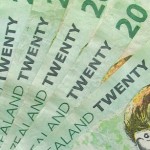The euro declined against the US dollar, following Fed’s decision to reduce the scale of its monthly asset purchases at the policy meeting on Wednesday.
Having reached a session low at 1.3650 at 03:00 GMT, EUR/USD traded at 1.3679 at 09:48 GMT, losing 0.05% for the day. Support was likely to be received at December 6th low, 1.3621, while resistance was to be encountered at December 18th high, 1.3812.
The Federal Reserve announced a plan to reduce the pace of its monthly asset purchases to $75 billion from $85 billion, on its two-day policy meeting, concluded on Wednesday.
The announcement supported the greenback as the Fed stimulus program tended to devalue the US currency.
“Reflecting cumulative progress and an improved outlook for the job market, the committee decided today to modestly reduce the monthly pace at which it is adding to the longer-term securities on its balance sheet,” Bernanke said at a press conference in Washington after a meeting of the Federal Open Market Committee, cited by Bloomberg.
Fed Chairman Ben Bernanke announced that the central bank purchases will be divided between $40 billion in Treasuries and $35 billion in mortgage bonds starting from the beginning of 2014.
The Federal Reserve Bank decided also to keep its benchmark interest range unchanged at 0.00% to 0.25%. The central bank reassured that the benchmark rate will likely stay low, saying in its statement that “it likely will be appropriate to maintain the current target range for the federal funds rate well past the time that the unemployment rate declines below 6.5% percent, especially if projected inflation continues to run below the Committee’s 2% longer-run goal”.
Yesterday, official data showed the number of building permits issues in the U.S. fell less-than-expected in November, remaining near the highest level since January 2008, while at the same time US housing starts rose at a faster-than-expected pace in November.
In a report the Census Bureau said that the number of building permits issued last month declined by 3.1% to a seasonally adjusted 1.01 million from 1.04 million units in the previous month. Analysts projected a 4.7% decline to 0.99 million units in November.
The report revealed that US housing starts rose by 22.7% in November, hitting a seasonally adjusted 1.1 million from October’s 0.89 million. Analysts’ forecast pointed an increase to 0.95 million.
The release of housing starts data has been delayed due to the experienced partial government shutdown.
Meanwhile, the euro was supported by data that revealed the current account surplus of the Euro zone widened to reach the highest level in six months.
The ECB reported that the Euro zone current account marked a seasonally adjusted surplus of 21.8 billion euro in October, widening from 14.9-billion-euro surplus in September, upwardly revised from previously estimated 13.7 billion euro. Analysts had projected that the current account surplus of the 17-nations common area will narrow to 14.2 billion euro.
On Wednesday, official data showed that the German business confidence improved in line with expectations to reach the highest level since April 2012.
The German research institute, Ifo, published its Business Climate Index (BCI), which rose to a seasonally adjusted 109.5 in December, in line with preliminary estimates and up from a reading of 109.3 in November. The Business Expectations Index which is a sub-index of the BCI, evaluates the attitude toward business perspectives during the next half a year. The sub-index increased to 107.4 in December, the highest level since May 2011, from 106.4 in November and above analysts’ forecast for a reading of 106.5. Only the Current Assessment Index, also a sub-index of BCI, disappointed declining to a reading of 111.6 this month from 112.2 in November, defying analysts’ projections of an increase to 112.5.
Elsewhere, AUD/USD reached a session low at 0.8823 at 3:25 GMT, also the pair’s lowest point since August 25th 2010, after which consolidation followed at 0.8858, dipping 0.02% for the day. Support was likely to be found at August 25th 2010 low, 0.8772, while resistance was to be encountered at December 18th high, 0.8944.





